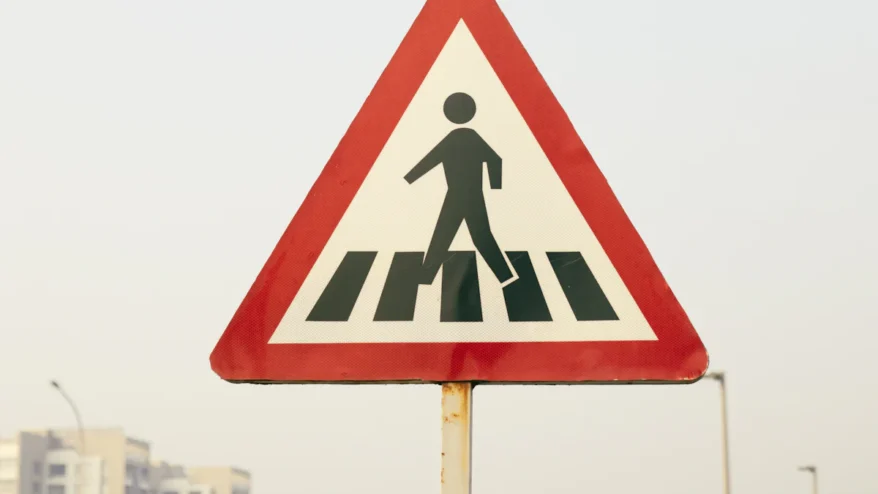Road Safety and Rules: What You Need to Know
Road safety and rules play a crucial role in protecting lives. In 2022, motor vehicle crashes claimed 42,514 lives. Pedestrian fatalities reached 7,522. These numbers highlight the importance of understanding road safety and rules. Communities lose a lot because of these incidents. The global economy faces an estimated $1.8 trillion impact from crash-related injuries between 2015 and 2030. Everyone must prioritize road safety and rules to reduce these figures. Safe roads benefit everyone by fostering safer communities and saving lives.
Understanding Road Safety and Rules
Key Principles of Road Safety and Rules
Defensive Driving
Defensive driving is the foundation for road safety and rules. Drivers must anticipate potential hazards on the road. This approach reduces the risk of accidents. Always maintain a safe distance from other vehicles. This practice provides ample time to react to sudden changes. Avoid aggressive driving behaviors. These actions include tailgating or weaving through traffic. Adhering to defensive driving principles enhances overall road safety.
Awareness and Anticipation
Awareness and anticipation are critical for road safety and rules. Drivers should remain vigilant at all times. Constantly scan the road for any unusual activity. This habit helps identify potential dangers early. Anticipate the actions of other drivers. Predicting their movements allows for better decision-making. Awareness extends to pedestrians and cyclists. Recognizing their presence ensures safer interactions on the road.
Weather Conditions
Weather conditions significantly impact road safety and rules. Rain, snow, and fog reduce visibility. Drivers must adjust their speed accordingly. Wet or icy roads increase stopping distances. Extra caution becomes necessary in such conditions. Use headlights during adverse weather. This practice improves visibility for all road users. Stay informed about weather forecasts. Planning trips around severe weather enhances safety.
Distracted Driving
Distracted driving poses a major threat to road safety and rules. Activities like texting or eating divert attention from the road. These distractions lead to accidents. Always focus solely on driving. Keep both your hands on the wheel and your eyes on the road. Avoid using mobile phones while driving. Implementing these practices minimizes distractions. Prioritizing attention ensures a safer driving experience for everyone.
Essential Road Rules for Drivers

Speed Limits and Their Importance
Speed limits serve as a fundamental aspect of road safety. Adhering to these limits reduces the risk of accidents. Speeding often leads to severe injuries or fatalities. Driving within prescribed speed limits enhances safety for everyone.
Signs clearly indicate speed limits. Unlike some places in India where different vehicles have different speed limits, this would be rare or non-existent in the US. Every vehicle is treated equally.
Urban vs. Rural Areas
Urban areas typically have lower speed limits. This necessitates high pedestrian traffic and dense populations. Drivers must remain vigilant in these environments. Rural areas may allow higher speeds. However, wildlife crossings and sharp turns pose risks. Adjust speed according to road conditions.
School Zones
School zones require extra caution. Children often cross roads unpredictably. Reduced speed limits ensure their safety. Always obey the school zone signs. The fines for speeding in these areas are substantial. Prioritize the safety of young pedestrians.
Right of Way Rules
Right-of-way rules prevent confusion at intersections. These rules dictate which vehicle proceeds first. Understanding these rules ensures a smooth traffic flow. Safe driving practices rely on adherence to the right of way.
Intersections
Intersections demand careful attention. Yield to vehicles already in the intersection. At stop signs, stop completely. Proceed only when the path is clear. Traffic lights provide guidance. Follow signals to avoid collisions.
Pedestrian Crossings
Foot traffic is prioritized at pedestrian crossings. Always yield to pedestrians at crosswalks. When necessary, make complete stops. Watch out for pedestrians entering the road. Awareness prevents accidents and promotes safety.
Pedestrian Safety Tips

Safe Walking Practices
Using Crosswalks
Crosswalks provide a designated area for pedestrians to cross roads safely. Always use crosswalks when available. Drivers anticipate pedestrians at these locations, reducing the risk of accidents. Uncontrolled crosswalks often lead to higher pedestrian crash rates. Ensure that you check for oncoming traffic before stepping onto the crosswalk. Make eye contact with drivers to confirm that they see you. This practice enhances safety and prevents misunderstandings.
Visibility at Night
Visibility at night poses a significant challenge for pedestrian safety. Wear bright or reflective clothing to increase visibility. Carry a flashlight to illuminate your path and alert drivers to your presence. Stay on well-lit paths whenever possible. Avoid crossing streets in areas without adequate lighting. Increased visibility reduces the likelihood of accidents during nighttime hours.
Look both ways
When crossing the road, it’s crucial to check both sides to ensure safety. Vehicles may honk, brake, or overtake unexpectedly.
Americans learn to ‘look both ways’ before crossing. They do this when walking or driving. This habit is especially important for expats. Expats are people living outside their native country. Those from countries with opposite-side driving need to be extra careful. Be cautious about which direction you check.
Stay on Sidewalks
Large roads feature sidewalks specifically designed for pedestrian use. Use these sidewalks and walk along them to prevent any accidents on the road. Avoid stepping down the elevated sidewalks without a valid reason or without ensuring there is less traffic. If there are no sidewalks, keep to the extreme left.
Understanding Pedestrian Signals
Walk and Don’t Walk Signs
Pedestrian signals guide safe crossing practices. “Walk” signs indicate it is safe to cross. Begin crossing only when the signal displays “Walk.” Remain vigilant and watch for turning vehicles. “Don’t walk” signs signal pedestrians to wait. Never start crossing when the “Don’t Walk” sign is active. Following these signals ensures safer interactions between pedestrians and vehicles.
Countdown Timers
Countdown timers provide valuable information for pedestrians. The timer indicates how much time remains to cross safely. Use this information to judge whether to start crossing. If the timer is low, wait for the next cycle. Countdown timers help pedestrians make informed decisions. Proper use of these timers enhances pedestrian safety at intersections.
Addressing Common Road Safety Issues
Drunk Driving
Legal Consequences
Drunk driving remains a significant road safety issue. Law enforcement officials enforce strict penalties for offenders. Legal consequences include fines, license suspensions, and imprisonment. Courts may impose mandatory alcohol education programs. Repeat offenders face harsher penalties. Legal systems aim to deter drunk driving through severe consequences.
Prevention Strategies
Prevention strategies help reduce drunk driving incidents. Designated drivers ensure safe transportation after events. Public transportation offers an alternative to driving under the influence. Ride-sharing services provide convenient options for safe travel. Community programs educate about the dangers of drunk driving. Officials urge drivers to celebrate responsibly during the holidays. Awareness campaigns highlight the risks associated with impaired driving.
Seat Belt Usage
Importance of Seat Belts
Seat belts play a crucial role in road safety. Wearing a seat belt reduces the risk of injury in accidents. Seat belts keep occupants secure during collisions. Proper usage prevents ejection from vehicles. Safety experts recommend wearing seat belts at all times. Children require appropriate car seats or booster seats for protection.
Statistics on Seat Belt Effectiveness
Statistics demonstrate the effectiveness of seat belts. The National Highway Traffic Safety Administration reports that seat belts saved approximately 14,955 lives in 2017. Seat belt usage decreases the risk of fatal injury by 45% for front-seat passengers. Rear-seat passengers also benefit from seat belt use. Studies show that seat belts significantly reduce the severity of injuries. Safety campaigns emphasize the importance of consistent seat belt usage.
Road safety requires commitment and vigilance. Defensive driving, awareness, and adherence to speed limits reduce accidents. Crosswalk usage and visibility improve pedestrian safety. Community involvement enhances road safety initiatives. Engage in impactful education programs like You Choose—Youth Road Safety. Encourage others to prioritize road safety.
For more intriguing insights into other STEM-related topics, visit ENTECH Online. Explore our digital magazine dedicated to inspiring teenagers and young adults to pursue their passions in science, technology, engineering, and mathematics.
See Also
Insights on French Fighter Jets Accidents Revealed
